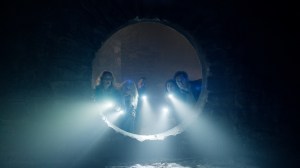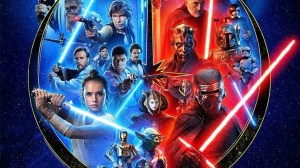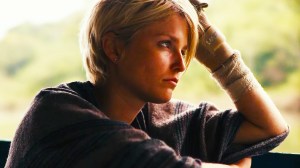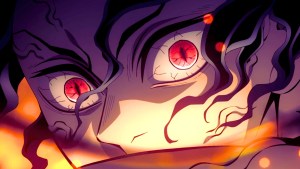The fourth season of Star Trek: Discovery comes to a close today with the finale episode “Coming Home” on Paramount+. ComicBook.com had the opportunity to speak with Star Trek: Discovery showrunner Michelle Paradise about the show’s fourth season as a whole and the epic finale, including that big surprise cameo at the end. Be warned that SPOILERS for the Star Trek: Discovery Season Four finale episode “Coming Home” follow. After making first contact with Species Ten-C only to have Tarka’s rash actions set them all back in the previous episode, “Coming Home” finds the Discovery crew racing to stop Tarka’s plan and finally convince the Ten-C to stop the DMA before it destroys Earth and Ni’Var.
Videos by ComicBook.com
Luckily, they prove successful. For a moment, it looks like Book was lost, but he’s returned by the Ten-C. Upon returning home, Earth’s president — played by real-life political figure Stacey Abrams — announces Earth’s intentions to rejoin the United Federation of Planets.
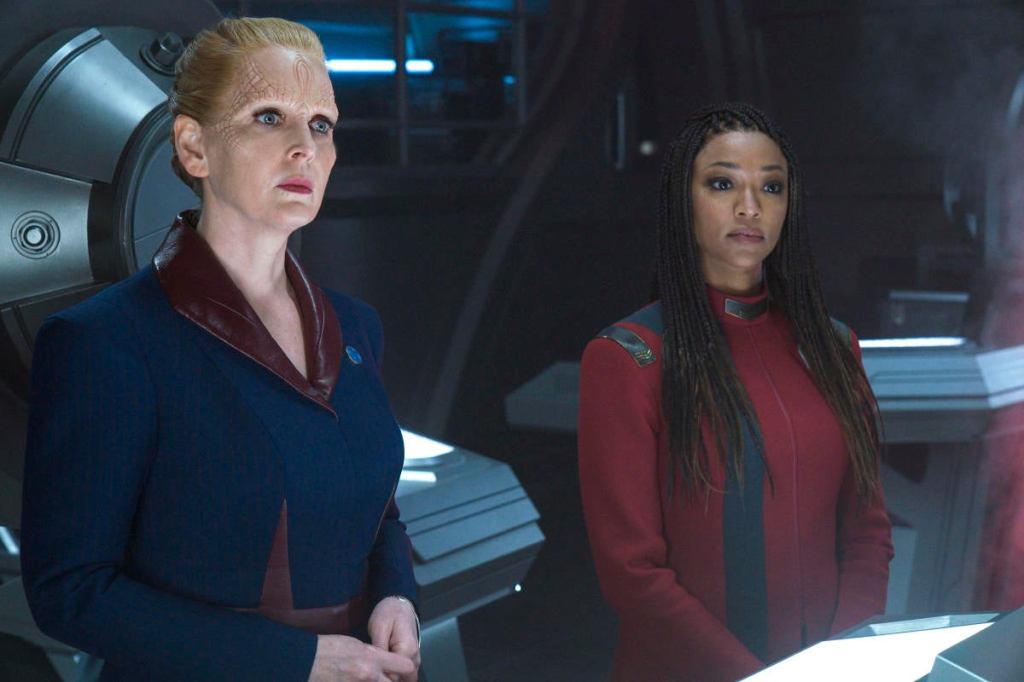
We asked Paradise about her season-long plans, Book’s fate, Abrams’ cameo, and more. Here’s what she had to say:
This season’s themes really seemed to build on those from season three, with that season being largely about communication and this one being about community. Can you tell me a bit about how those themes developed in the writers’ room? Was there something specific that you feel didn’t come through last season that you wanted to make sure you brought to the fore this season?
Michelle Paradise: When we went into season three, obviously, the big thing that we find in 301 is that the Federation is diminished to whatever degree, and our heroes are going to discover that as season three progresses. But we always knew going into season three that bringing the Federation back together again, as symbolized by Earth coming back, would be a two-season job. So I think some of the things that you’re highlighting are just us in the room knowing in advance that we’ve got a two-season story that we’re telling about that.
And so of course, there are thematic resonances between the two seasons and things that carry over from season three and season four that is about coming back together and all of those sorts of things. I would say, thematically, there weren’t things in season three that we didn’t explore that we wished we had. But we do, in every season, look for what are the new things that we want to explore this season? And where are the places that we want to play? And so for season four, it was starting the room with those kinds of questions, but also at the same time, knowing that we had story threads from season three that we were bringing into season four. So there were going to be those resonances as well.
Is that pretty typical of how you build the show’s big arcs? Starting something in season three, that won’t resolve until season four? Things in season four that you’re now working out in season five? Or is it typically more season by season?
It really is season by season. We don’t — I mean, I suppose this is true of every show out there — we don’t know that we’re going to have the next season, so we can’t really be thinking that far ahead. When we came into season three, where I say we knew it would be a two-season arc, it’s we had the fingers crossed that we were eventually going to get a season four. But really, those discussions were about bringing the Federation back together again is too big for one season. We really try to play the emotional reality of those things, and it just didn’t feel like there was any way we could reasonably be there by the end of season three.
So that piece of it aside, every season we approach as its own thing. And so we do talk at the very beginning of the room about what do we want to do thematically? What do we want to do emotionally? How do we want our characters to arc from the beginning of the season to the end? What do we want the end to be? We kind of go in and have all of those conversations so that we have a basic roadmap. And, of course, as the season progresses and we’re breaking individual episodes, some of those things can change, but we do have a very clear vision for where we’re going and how we think we’re going to get there. And then we leave room to play along the way.
There’s a big cameo at the end of the episode with Stacey Abrams playing the president of Earth. How did that come together?
I’m, again, hearkening back to season three for just a moment, but we knew that bringing the Federation back together again would be a bit of a longer arc. As we came into season four, we knew that the end of the season would pay off that arc. And given what we see in episode 303, Earth is not a member of the Federation anymore. We always knew that Earth coming back in would symbolize the return of the Federation and that the federation is back again. And so as we kind of got into season four and got about halfway through, we knew we would need a person, a face to symbolize not only Earth’s presidency, but to say those words, that Earth is back and we are in. And so then it became a question of, well, who should be that person?
And Alex [Kurtzman] and I talked about it, and we knew by that point that Stacey Abrams was a fan of Trek in general and the show specifically, and I said, “Well, what do you think about her?” And he was like, “Oh my gosh.” And he said, “Let’s see if we can talk to her and pitch the idea and see what she thinks.” And so we reached out, and she was kind enough to jump on a Zoom with us, and we pitched her. She didn’t want to know any spoilers, because she is a fan of the show, so we pitched her the most basic idea that Earth would be back. But then we pitched her this character and who the character is and what the character represents. And honestly, we couldn’t think of anyone, there’s no one, better for that. And we were just so fortunate that she said yes and that she wanted to do it. So we feel like we just got so lucky with that. And she came and she did it, and obviously, she’s just fantastic.
I think the character, to me, who had to biggest journey this season may have been Book. Before we get into that, I feel like I should ask the question that will be on everyone’s mind after watching the finale: What’s David Ajala’s future look like on the show going into its fifth season? Have we seen the last of Book? Is his role reduced by his sentence?
I’m nervous to say anything at all about season five because I can hear people listening in and recording. I’m just being playful. I hesitate to say anything about season five, but yes, we did take them on quite a journey, and we did leave them in an uncertain place, so I would imagine that there’s more to explore in terms of what happens after that. But in terms of anything about the next season…
I got you. Can you tell me anything about the conversations you had in the writers’ room about Book’s journey this season? Back when, as you mentioned, you were breaking down the themes that you’d explore?
There’s a lot that we’re exploring thematically. One of the big things is grief and trauma and how do we deal with that? And the DMA is sort of a stand-in for what societally, well globally, we’ve been going through. And we’re all still in it to a degree, but it’s a thing that’s happening to all of us, but it affects some people more intimately than others. And we knew going into the season that Book was going to be the one who was most specifically and directly impacted by the DMA. And just with that, you’ve got a character who is going on quite a journey of loss and grief and finding his way through that and finding purpose in that.
We knew that it had to affect his relationship with Burnham. We knew that it had to affect the choices that he would make. But all along the way, we wanted to be super clear on his point of view and make sure that in whatever he was doing, even in the moments that felt like they were going against Burnham, that for him, it was always coming from a place of the greater good and stopping the DMA and making sure this doesn’t happen to anyone else, which I think, for us, it feels like the mark of a heroic character. And so we put a lot of thought into that and how does he evolve over the course of the season and then come out the other side having worked through all of this, and then find his way after, I think, is an interesting question too, for him.
There’s a moment there towards the end where it seems like Book may be gone for good. Was there ever any serious consideration to the idea of having Book die at the end of this season?
No, it would’ve just been such a bummer to do that. Really, that moment on the bridge came out of two different things, two different ways of looking at it. For the Book journey specifically, as Reno highlights for him and as he comes to realize in dealing with Tarka, his grief has blinded him to some other things, and he’s made some choices that are very, very challenging for the Federation and for Burnham and all of that. But he is this heroic character. He is doing everything for the right reasons. And once he realizes what he’s doing and the potential cost of that, there are things of course, that he didn’t know that he realizes because Tarka didn’t tell him. But once he realizes the cost of that, the mark of a hero is how far will he go to make this right and stop the bad thing from happening? And he was willing to go all of the way. And it felt like that moment of him being willing to sacrifice everything for the greater good, that’s who he’s been all season, that’s who he continues to be, that’s what a hero does. And so it felt like from that perspective, giving him that moment felt right for his character.
And then on the other side of it, on the Burnham side, this whole season has been about her captain’s journey. And we went into every single episode asking what is Burnham’s captain’s journey in this episode? And the height of that journey, I guess, is when there is a question of the greater good, but you’ve got the worst possible thing happening, what do you do? How do you pull it together? How do you keep going? Because a captain has to do that.
I can’t say enough about Sonequa. Un that moment on the bridge where she sees that as Burnham, and then has to pull it together and go sit back in the chair; to me, that is one of the great moments of this series, just what she did in that. And that’s, to me, the mark of a captain. That’s what a captain does. And so giving her that moment, and then, of course, a little bit later in the episode, being able to see that he didn’t die after all was cool.
I wanted to mention the previous episode before this one because I thought it was really fascinating. Trying to communicate with Species Ten-C reminded me a bit of the film Arrival, which was very cool. Can you tell us a bit about how the idea for the Ten-C and what they are came about?
The very genesis of it comes out of questions of theme and what do we want to do this season, and what do we want to talk about in our storytelling? And one of the things that we were looking at thematically is connection and how do you connect with those who have such wildly different perspectives or who are so wildly different from you? And so knowing that that’s the sandbox we wanted to play in, for lack of a better term, we knew at the beginning of the season that we wanted a species that was as different as they could possibly be. They don’t live in our galaxy. They look nothing like us. Universal translators will not work. We wanted them to be physically bigger, really the thing that is metaphorically and physically bigger than us, something is bigger than us. And so then the question became, well, how do we make them that different? How do we set the wall that our characters have to surmount so high that it feels impossible?
And of course, in sci-fi, it tells us about our own world as well. And so if our heroes can overcome this, the seemingly impossible, to connect with a species that is nothing like them at all, in a way, that says, okay, well, what can we do here amongst other humans here on Earth?
In any event, that was all the thinking that went into making them very different. And then in terms of how they look, that was our wonderful, wonderful design teams coming up with the look of that, our incredible VFX teams bringing them to life. In terms of the communication, that was a few months of talking back and forth with our science consultants and our linguist consultants, and the folks at METI to even come up with all of that. So it was quite the process. But I’m glad you liked it, and I’m glad it resonated.
Leaving the galaxy seems like a big deal. The show is breaking through a literal boundary that’s been in place since its second pilot episode. Did that feel like a big threshold for you all to cross?
It felt like a big thing. We knew that it was a big thing. It also felt like, for this season, and especially given where we wanted to go and making the Ten-C as different from us as possible, even putting them outside the galaxy felt like that was the right choice. They’re not even in our galactic neighborhood. They’re way outside. So that was something that felt right both thematically and story-wise. And it felt like a really cool opportunity. What a cool thing to get to see, in a new way, what that looks like and then what’s beyond it. It feels like exploring places that our heroes haven’t explored before, and that was also really a neat thing to get to do.
One of the other standout stories this season was the relationship growing between Saru and the president of Ni’Var, T’Rina. Was that always the plan when you introduced her in season three or did the relationship emerge more organically as you wrote them together?
It emerged from the magic of casting. When we brought the character T’Rina in back in 307, at the time, just on the page, it was the guest star of the episode and president of Ni’Var, and maybe we come back to Ni’Var again and maybe we don’t, who knows? They were just wonderful together. And from the moment Tara [Rosling] came on screen, there’s just something about her that is just fantastic. And she was great. And even just watching the early dailies of those episodes, we were saying, she’s fantastic, we have to find a way to use her again. And then to see how that episode cut together with her and Saru and there were just these little moments, and she and Doug [Jones] got on so well just as people in the world.
So coming into season four, that kind of stuck in our heads, and we thought, oh, we have to explore this. It’s just so lovely. But we knew that we wanted it to be a very, very slow burn. And we knew that we didn’t want to bring them together until the end of the finale. And so then it became a question of, all right, how do you slow roll that? How do you get them to a place and then turn and then keep that will they/won’t they tension going and really just breadcrumb it out very slowly. But they’re great together. They’re just great together, on-screen together. I really like them too. They’re very sweet.
Star Trek: Discovery is streaming now on Paramount+.

